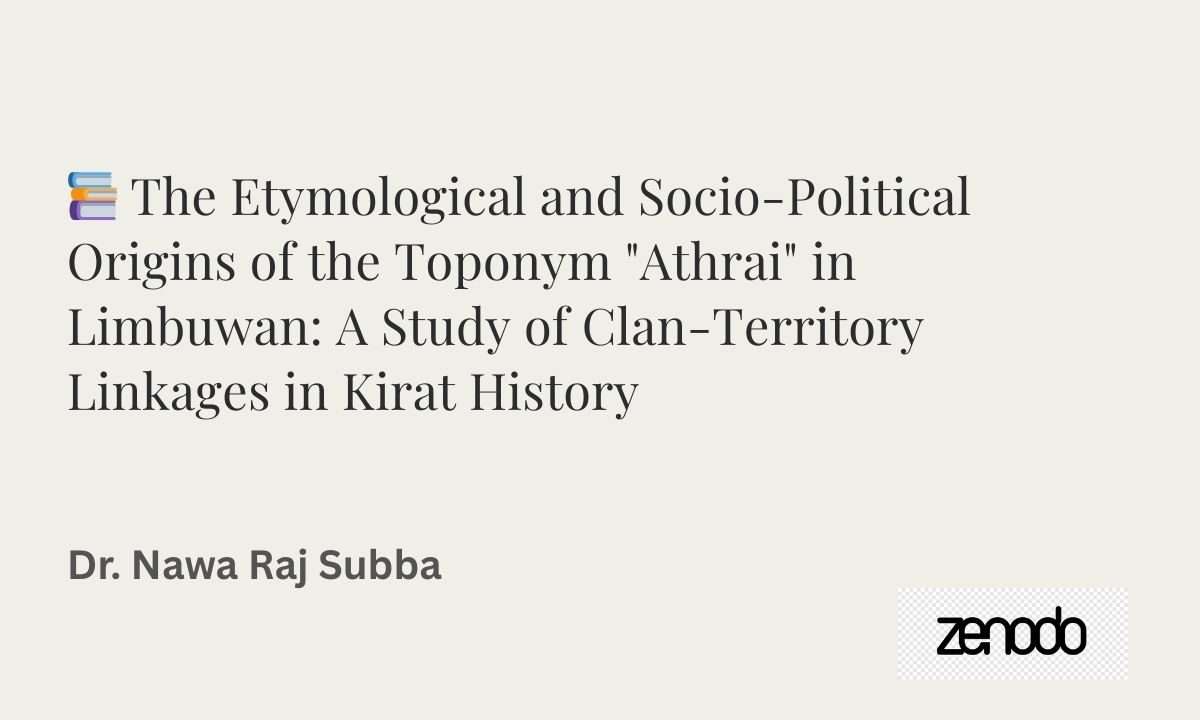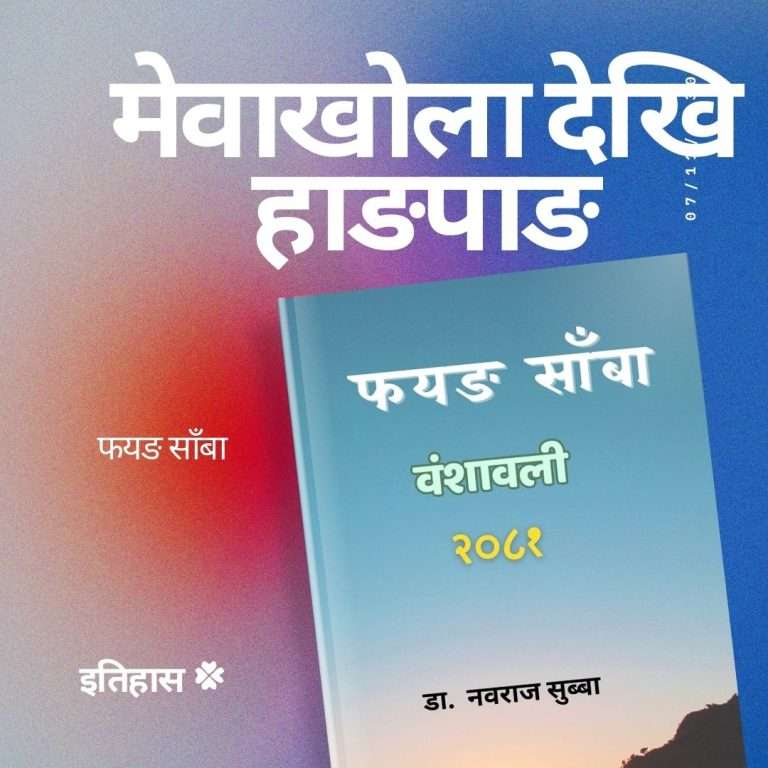Athrai toponym
The Etymological and Socio-Political Origins of the Toponym “Athrai” in Limbuwan: A Study of Clan-Territory Linkages in Kirat History
- Dr. Nawa Raj Subba
Introduction to Athrai toponym
This research investigates the etymology of the Athrai toponym, placed in Limbuwan, eastern Nepal, and its link with the Limbu’s Athre clan. The study demonstrates through a multi-faceted method— the historical, linguistic anthropological and ethnographic method – how the name Athrai was used directly from the mouth of the dominant social and political element in the area the Athre clan and resulted in the medieval time (15th-17th century) the entrenchment of the name. Drawing from oral traditions, treaties, and clan-based systems of territorial government, this paper argues that the suffix -rai of Limbu toponymy is derived from ‘land of,’ thus making Athrai ‘land of Athre. The results illustrate the relationship between clan identification and territorial nomenclature in Kirat societies and contribute to a more general understanding of the practices of indigenous place names in the Himalayas.
Keywords: Limbuwan, Athrai, Athre lineage, Kirat History, Toponym, Clan-territory-habitat relationship.
Background
For the Limbus, one of the subgroups of the Kirat ethnic grouping, Limbuwan, which consists of areas of eastern Nepal, Sikkim, and Darjeeling has always been a cultural and political bastion. Historically, Limbuwan was not as centralized as its neighbors, and had 10 different autonomous princely states (Thums), and relied on the inherited clan systems, which centred on major Limbu towns which were collectively known as Limbuwams, with territorial and ethnic limits often correlating. Among these Thums, Athrai (modern Terathum and Taplejung District) is significant as it carries the name of the Athre clan, one of the leading Limbu lineages.
Pre-Gurkha Limbuwan
The work, however, brings vital findings of the vacuum in Kirat history scholarship and clearly understand of how the clan relationships substantially influenced toponomies in the pre-Gorkha Limbuwan. While existing research (Chemjong, 1967; Subba, 1999) recognizes the linkage between clan territory none has systematically considered how linguistic, historical and sociopolitical forces have blended to produce specific toponyms such as Athrai. Integrating oral histories, colonial treaties, and linguistic data, the author traces how the name of the Athre clan became congruent with its territory.
Athre to Athrai toponym
Nepal’s place names are closely entwined with social history, ethnicity, geopolitics, and cultural structure (Regmi, 1975; Onta, 1996). In the Limbuwan region, the term “Athrai” likewise sparks debate in this sense. This paper investigates the ancient state system of the Limbu people, thar-based territorial division, and the oral tradition-based genesis of the word Athrai.





